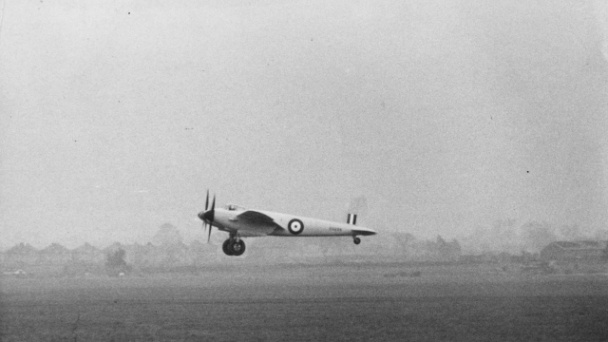
25 November 1940: De Havilland Aircraft Company’s Chief Test Pilot, Geoffrey Raoul de Havilland, Jr., and engineer John Walker, made the first flight of the DH.98 Mosquito prototype, E0234, at Hatfield, Hertfordshire, England. The prototype’s Royal Air Force identification was W4050. The multi-role combat aircraft was constructed primarily of layers of balsa covered with layers of birch, then a layer of doped cotton fabric. It was powered by two Rolls-Royce Merlin V-12 engines.
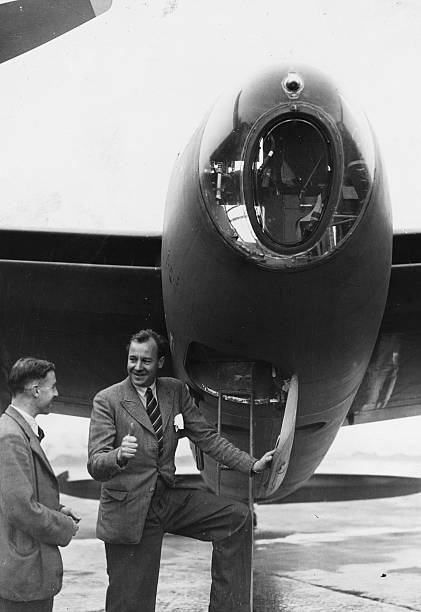
The construction materials took advantage of plentiful supplies of wood, and also made workers who were not in the standard metal aircraft industry able to take part.
The prototype was rolled out 19 November 1040, painted overall yellow.
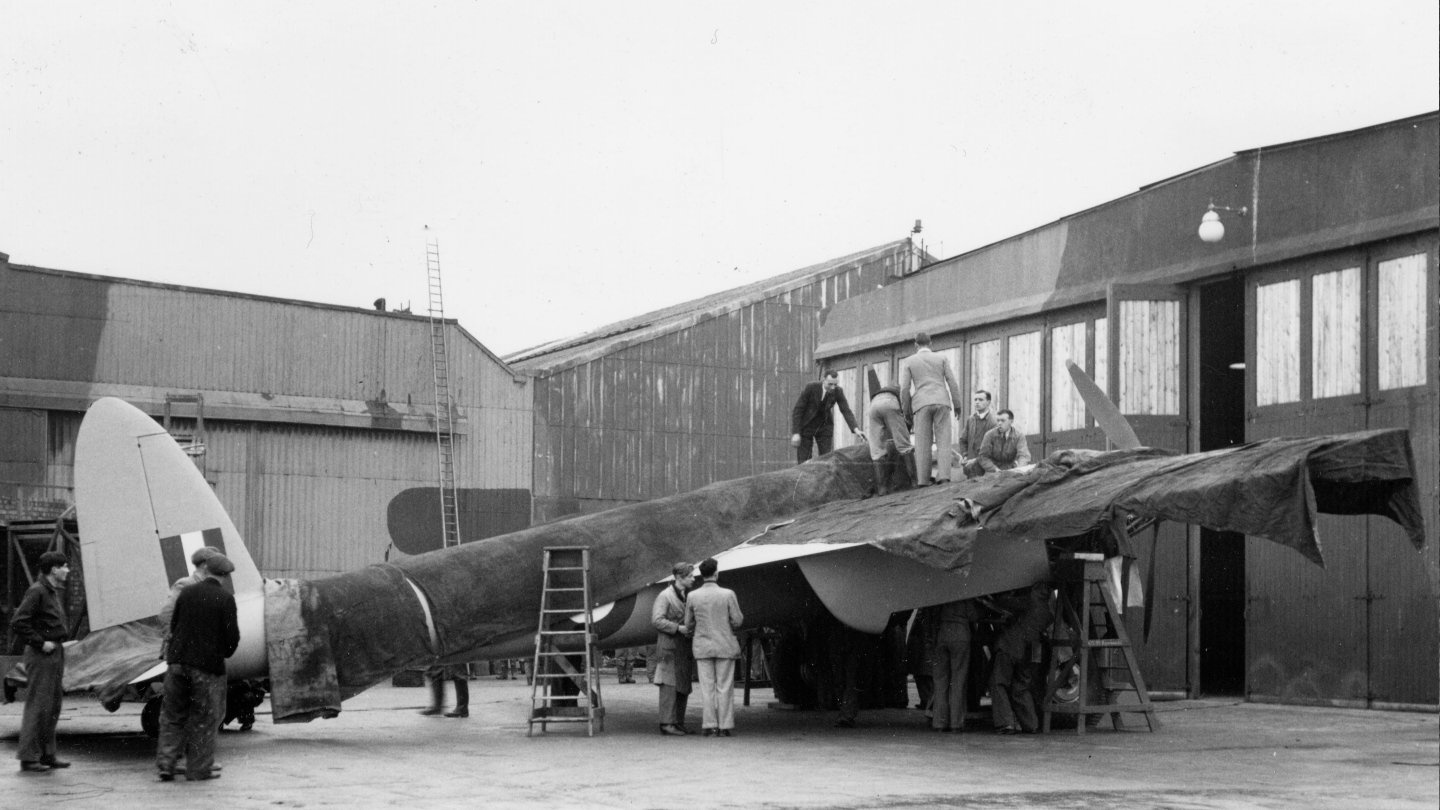
The prototype had a wingspan of 54 feet, 2 inches (16.510 meters), and its gross weight was 19,670 pounds (8,922 kilograms). W4050 was powered by two liquid-cooled, supercharged, 1,648.96-cubic-inch-displacement (27.01 liter) Rolls-Royce Merlin Mk.21 single overhead camshaft (SOHC) 60° V-12 engines, producing 1,460 horsepower at 3,000 r.p.m. at 10,000 feet (3028 meters), with 10 pounds (0.69 Bar) of boost, and driving three-bladed de Havilland Hydromatic propellers through a gear reduction.
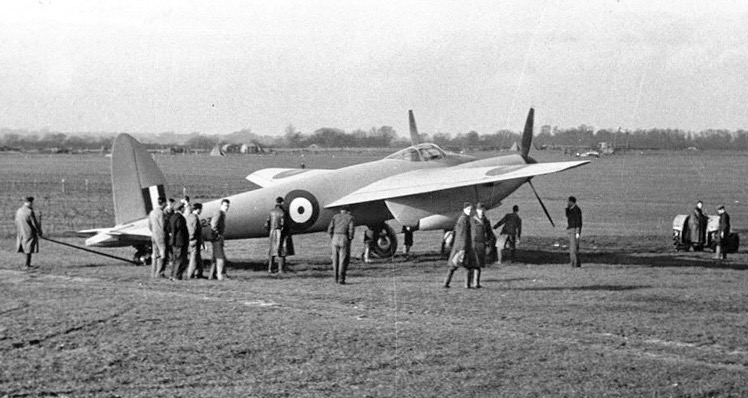
The DH.98 had been predicted to be 20 miles per hour (32 kilometers per hour) faster than the Supermarine Spitfire, but was actually much faster. In testing, the prototype reached 392 miles per hour (631 kilometers per hour) at 22,000 feet (6,706 meters). Improvements were continuously made, and with 2-stage superchargers, W4050 reached a maximum 437 miles per hour (703 kilometers per hour). The DH.98 prototype had a service ceiling of 34,000 feet (10,363 meters) and range of 2,180 miles (3,500 kilometers).
The production fighter variant, the Mosquito F. Mk.II, was 41 feet, 2 inches (12.548 meters) long with a wingspan of 54 feet, 2 inches (16.510 meters) and height of 15 feet, 3 inches (4.648 meters) in 3-point position. The wings had 1½° incidence with approxmatey 2½° dihedral. The leading edges were swept aft 2½°. The total wing area was 436.7 square feet (40.6 square meters). The fighter’s empty weight was 13,356 pounds (6,058 kilograms) and the maximum takeoff weight was 18,649 pounds (8,459 kilograms). The Mk.II had a total fuel capacity of 553 gallons.
The Mk.II had a cruise speed of 265 miles per hour (426 kilometers per hour) at 15,000 feet (4,572 meters) and maximum speed of 380 miles per hour (612 kilometers per hour) at 21,400 feet (6,523 meters).
Mosquito bomber variants could carry four 500 pound bombs, or two 2,000 pound bombs, but were otherwise unarmed. Fighters were equipped with four Hispano Mk.II 20 mm autocannon and four Browning .303-caliber Mk.II machine guns in the nose.
6,411 DH.98 Mosquitoes were built in England, 1,134 in Canada and 212 in Australia. It was produced in bomber, fighter, night fighter, fighter bomber and photo reconnaissance versions.
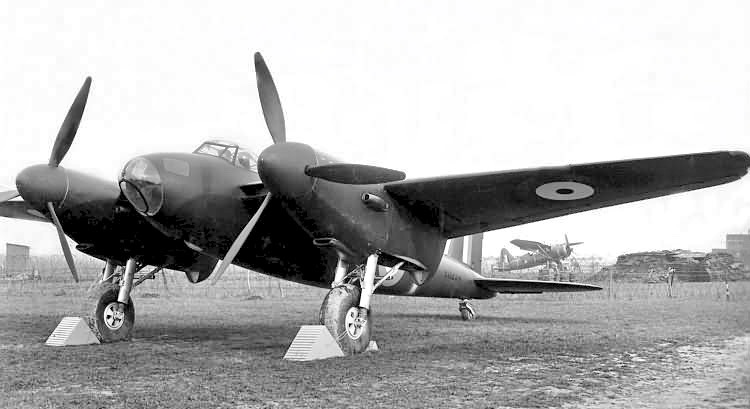
W4050’s (the prototype’s Royal Air Force identification) fuselage was damaged while taxiing at Boscombe Down, 24 February 1941, and had to be replaced with one intended for a second prototype, W4051. It remained at de Havilland and was used to test different engines, armaments and versions. After a series of tests conducted in December 1943, the prototype Mosquito was permanently grounded. It was used as an instructional airframe and later placed in storage.
In September 1958, W4050 was turned over to the de Havilland Aircraft Heritage Centre. Today, the restored prototype DH.98 Mosquito is at the museum at London Colney, Hertfordshire, England.
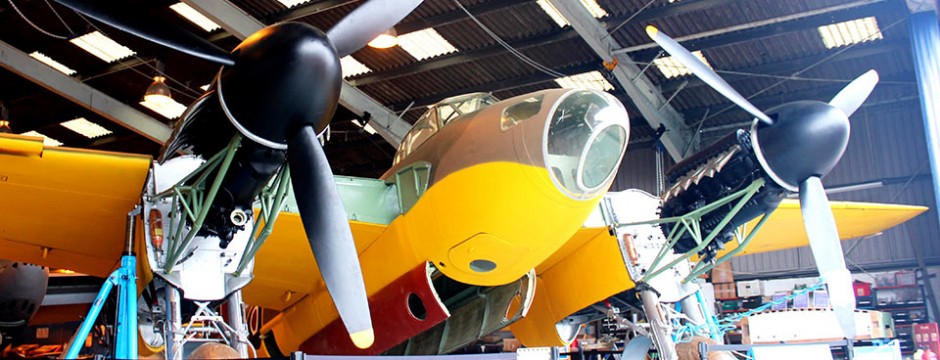
© 2020, Bryan R. Swopes
Isn’t the dehavilland heritage centre where it came from.
I believe that you are correct. The Hall seems to have an interesting history.
yes the Museum/Heritage centre was Known as Salisbury Hall about 6 miles from Hatfield 🙂 the Prototoype was built in secret in a Barn in the grounds of the Hall and this is now where it resides along with another two Mosquito’s and other interesting Planes well worth a visit 20 miles North of London
Worth a visit, I’m sure!
Salisbury Hall was Sir Geoffreys home for a while and prior to that home for Sir Nigel Gresley the designer of the worlds fastest steam locomotive.The Museum is well worth a visit.
Mallard?
A meter is an instrument and a metre is a measurement
Thank you, Roger. TDiA is based in the United States, so our staff uses the American spelling. To avoid confusion, we use the word “gauge.”
Uhm, i hate to interrupt, but the claim “fastest steam loco” is widely disputed due to inaccurate dynamometer-recording, downhill slope, failure of the loco which had to towed after the record attempt, and finally the fact that no Mallard ever reached only 110 mph before or after, a speed that the 005 by Borsig made on a regular base by _design_.
The 005s _undisputed_ record of being the first steam loco over 200 Km/h was achieved on a regular day and with acceleration on slight _uphill_-slope shortly before Paulinenaue/Brandenburg. Sorry for being Offtopic. 😉
The fastest steam locomotive in the United States was the Milwaukee Road’s Alco F-7 4-6-4, six of which were built to pull the railroad’s “Hiawatha” passenger trains. It was recorded at a speed of 125 m.p.h. (201 km/h) between Chicago and Milwaukee. Many U.S. passenger trains during the late ’30s routinely operated at sustained speed of 100 m.p.h.
I am very aware of the american Hiawathas and other very fast american locomotives! That 125 mph is credible, altough it was not officially recognized (a french railroad expert clocked it on a regular trip). But the real strong suit of all american fast trains was the very high sustained average speed with (by european standards) very heavy trains (usually ten cars or more, while german trains like the Rheingold or the “Fliegender Hamburger” had usually no more than 6).
It´s a sad thing they scrapped all of the F7s.
Built less than two months before I was born.
My first memory was the the window being blown onto my bed at my Grandarher’s house in the east end of London.
My Grandad, Laurent Giles, was a famous yacht designer and pioneer of moulded marine ply structures. In WW2 he was “Attached” by the War Office to de Havilland. The deH Heritage Centre has no records of him as he was not an employee, and he spent most of the war working for de H in Washington DC and Canada, designing structures for planes and fast patrol and rescue boats